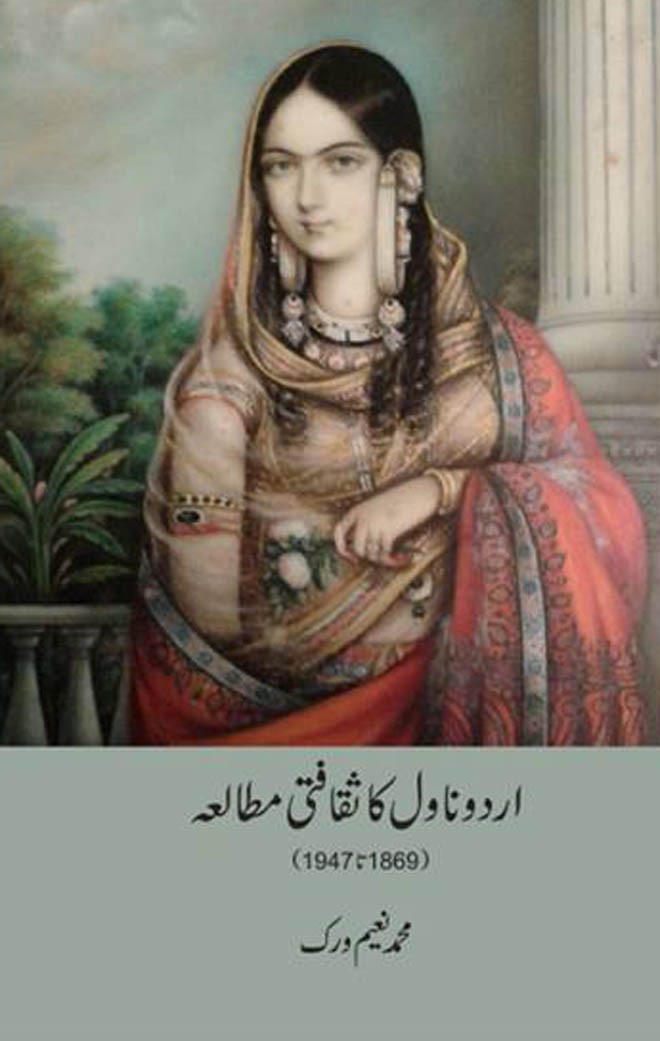
A literary quest to understand the culture of our land

Culture, it is said, is a direct product of historical processes and the ‘novel’ is its reflection. Keeping this in view, Mohammed Naeem Virk embarked on a quest to understand the culture of our land through the evolution of the Urdu novel.
He particularly focused on the period which saw the growth of the novel under the influence of the colonial scheme of literature. The novel as it is known today is actually the product of European culture. It was transplanted here and immediately took the place of the medieval dastaan or qissa or katha, which was the prose twin of fiction in the broadest possible sense. The novel brought with it, other formal concerns which were not incorporated in the semi-mythical structure of the local fiction narratives.
The book has been divided into five chapters. In the first one, he makes an effort to understand culture by referring generously to sources from all over the world, particularly the West. The second chapter deals with the collective identity that various characters in different novels forged. The third deals with the many differing worldviews that were thrown up as a process and the ethos that they may have referred to. The fourth discusses factors probably not that obvious and hidden in the context of agency, power and social mobility. In the last one, he analyses different characters in the various historical novels he studied.
The author has not dwelt individually on the duality of form and content but has stressed on the two being the dimensions of one cultural entity. Added to this are the worldviews and ethos that grew out of it and conditioned the interaction of form and content. The predominant value or factor or variable that stood out was that of fate or the definition or the understanding of fate. According to the author, the dominance of fate is the reason why the third person narrative has prevailed and is omniscient in nature.
The identification of the primary value, which he calls jauhar would dominate the entire discourse of the novel, or condition it, and then mould the flow of the narrative. The most striking is the value of sharif. This basically was not an acquired value but an inherited one. This value or category worked at two levels in the middle class -- the sharif had to be someone from outside the Indian racial or ethnical spectrum, they had to be outsiders like Syeds, Sheikhs, Siddiquis, Mughals, Pathans. Allied with these foreign antecedents of the primary characters was language; which had to be Urdu. One just had to be ahl e zabaan to be fully called a sharif or the representative character in the entire social spectrum prism -- and associated with language too is the question of rasm and rivaj (custom and traditions).
The role of gender in the early Urdu novels is critical for it is the women who represent the virtues of the sharif or the ashraf -- and it is also seen as leading to the economic consolidation. It is the virtue of honour that places women at the top of the hierarchy of values. Their physical attractiveness is not traditionally placed above her chastity or fidelity or loyalty to the husband.
According to the author, the value structures against which assessments have been made are heavily influenced by the colonial discourse or the narrative that has been imposed through a colonial administrative rule. And the leading ashraaf were supposed to be ones equipped with wisdom and knowledge and the propriety of the colonial master. The novels were basically reformist in nature, the benchmarks that introduced reform were all foreign in nature and not local at all.
The novel as a form was imposed on our literary tradition because the ethos of the dastaan was very different, and hence it did not really cope with the logical developments that form the basis of the plot-character interaction. In dastaans and kathas, the sequence of action was ruled more by fantasy and the improbable rather than the probable, and that determined the role and function of literature in our setup compared to the setup of the colonial masters.
The novel did mature gradually during the course of the 21st century to leave behind the baggage of the first phase. Greater possibilities were thrown open, more reflective of the diversity of culture, than in the earlier phase when it was seen to be a plain reaction to the literary canons of the West.
Urdu Novel Ka Saqafati Mutalia (1869-1947)
Author: Mohammed Naeem Virk
Publisher: Kitab Mahal-Lahore
Pages: 332
Price: Rs900